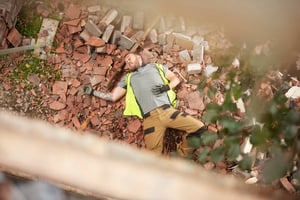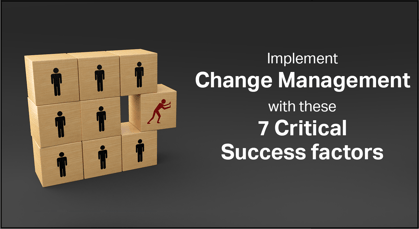It's clear that lone workers are the employees most at risk of death or injury. They are often victims to some of the more gruesome and unique deaths (read more about those here). Are you taking the right steps to ensure your lone workers' safety?
Who Are the Lone Workers?
Before you can determine how to keep your lone workers safe, you should be clear what constitutes a lone worker within your business. Simply put, if a people works away from others and out of direct sight of persons who could help, they are lone working. Some examples are:
- A person working alone in a small workshop or kiosk
- People working alone for long periods of time in an isolated area of a facility
- People working on their own outside normal hours (ex. security, and maintenance or repair staff)
- People who work from home who are doing something other than low-risk, office-type work
Take These Steps to Reduce Risk and Create a Safe Work Environment
1. Lone Working Policy
A lone working safety policy is a guide that will provide lone workers with practical advice and instruction on how to safely work alone. Be sure include the following in your lone working policy:
- Lone Working Policy Statement - About one paragraph outlining your company's mission to benefit your employees wellbeing.
- A definition of lone working - The definition of lone worker can differ from business to business, be clear what it means within your company.
- Your lone worker risk assessment - Break the risk down by job role, location and lone worker type.
- The procedures and measures you have put in place - Identify the actions you've taken to reduce risk and what is expected of your employees.
- The responsibilities of each employee including management and the lone workers - Be clear on which responsibilities lie on the lone worker and which lie on their supervisor.
- How to report on hazards or incidents - Outline how and when your employees are expected to report a hazard or incident.
If there are several lone workers carrying out different types of roles, you should consider writing seperate policies. This helps employees understand the risks that apply to them while avoiding reading through irrelevant information.
2. Signal For Help
 Some employees might find themselves in a location where no one can hear their screams for help. Sometimes they're injured in a way that won't allow them to call out at all. In these situations, it'd be helpful to have an audible alarm or a smartphone application that can alert others of distress.
Some employees might find themselves in a location where no one can hear their screams for help. Sometimes they're injured in a way that won't allow them to call out at all. In these situations, it'd be helpful to have an audible alarm or a smartphone application that can alert others of distress.
Sounding an alarm can scare off a would be aggressor, alert those nearby of an injury/ your location and notify law enforcement. You can sound a manual alarm (pulling a tether from a device connected to the employee) or use one of the many smartphone safety apps available. Preferably, use a product that would allow your workers to initiate the alarm without pressing any buttons or unlocking a phone, as these unnecessary steps take time.
3. Supervision / Monitering
When determine the amount of supervision needed for an employee, remember two things:
- The higher the risk, the greater the level of supervision required.
- The newer the employee, the greater the level of supervision required.
You should never leave an individual to decide whether they need assistance. Take this 23 year old tree worker from 2016. Confident that he could handle the wood chipper on his own, the worker was left to his own devices. Moments later, the worker died after being pulled into the wood chipper. The employer should have taken extra precautions because not only was the worker at high risk, it was his FIRST DAY on the job!
Eventually, your employee will have enough experience that you can confidently let them work on their own. However, that does not mean that they shouldn't be checked on occasionally. Monitoring your workers can be done in two easy steps:
- Check on lone worker at pre-agreed intervals using phones, radios or emails.
- Utilize manually operated or automatic warning devices that'll trigger if specific signals are not received periodically from the lone worker
4. Education
This one is pretty obvious. Who doesn't already have education or training in place for their employees? But are you confident that your training explores every aspect of your employees day? Your safety education should include:
- First aid training - basic skills to that can be used for minor injuries
- Risk defusing skills - How to calm an aggressive individual / escalated situation
- Equipment training - Teach the ins and outs of all the tools they will be using on the job
- Potential risks - Dangers and scenarios that may arrive in their specific role
5. Provide Safety Equipment
Make sure your employees are prepared by giving them appropriate safety equipment. This could include, a communication device, first aid, shelter, fire retardant, extra fuel, spare tires, food, and water. Along with safety equipment, you should make sure you employees have well-maintained tools and equipment.
Why Should You Care?
Need a reason to take the steps necessary to protect your workers? Here are three. There are several laws which hold the employer responsible for protecting the safety of everyone in their employment:
– The Health and Safety at Work Act 1974
– The Management of Health and Safety at Work Regulations 1999
– The Corporate Manslaughter and Corporate Homicide Act 2007
Risk of physical injury and delayed help are not the only dangers facing lone workers. Without safety confidence, the constant fear of impending injury can lead to reduced level of performances, lower levels of engagement with your organization and increased employee turnover.
Sources:
Work Injury Source , EHS Today , Stay Safe App, Health and Safety Executive , Esquire , Alert Media





